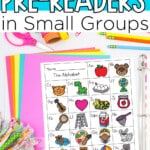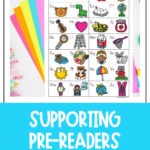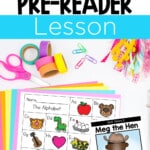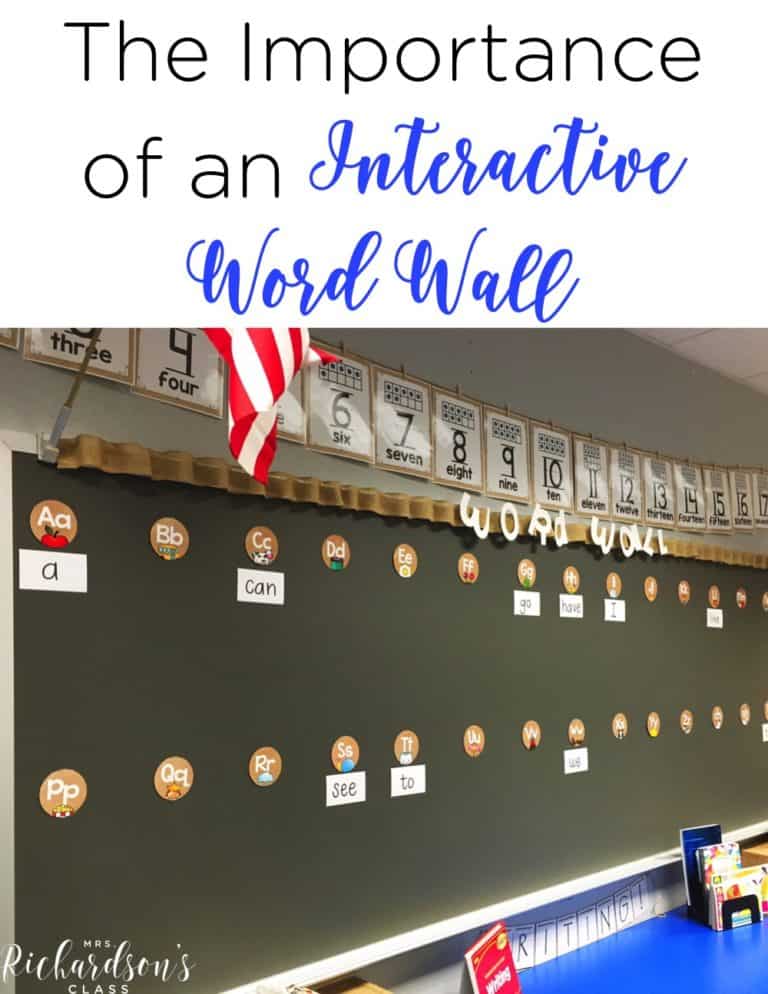

When it comes to the science of reading, we’ve all been hearing about the need to support our students with research-backed instruction. But what about pre-readers? How do we support pre-readers with the science of reading? When you’re meeting with your reading small groups, how can we continue to support pre-readers and move them towards becoming readers?
Almost all primary grade teachers will have students who can’t read in their classrooms at some point. The good news is that the solution is simple… You meet with them consistently, coach them, and help them become readers.
You might be thinking to yourself, “Well that sounds great, but what do I actually do in my reading small groups to help them?” Great! Let’s dive into how to teach reading small groups with pre-readers with the science of reading in mind.
With every single reading group, the very first step is to set your expectations and teach students the routine at your table. We want them to know what to generally expect during this time. This could include things like:
For my students who are reading this looks different. I expect them to get their book from their folder and come to the table, quietly warm up their brain by reading their book, then place the book under their chair.
Once you have completed your reading assessments and have identified the students who cannot yet read, you’ll want to group them together so you can differentiate reading instruction to support them. Here’s a sample schedule to try to support pre-readers by meeting them where they are, filling in the gaps with authentic practice, and equipping them with skills to move forward.
If students don’t know any letters or sounds, you can start by introducing letters and their sounds one at a time as explicitly and quickly as possible.
Once students learn how to decode some short vowel words, guess what…they are readers! Now you can lessen the phonics lesson time and squeeze in some dictation where they write words with the phonics skill they have learned and practiced. I always have so many things to squeeze in!
If you still feel a little unsure of how to structure a lesson with a decodable book in your reading small groups, you might find the Short Vowel Decodable Readers resource helpful! Not only does it have decodable books, it has scripted lesson plans that will walk you through the entire lesson.
This resource also has word work and phonics activities, teaching posters, parent communication notes, and more! Everything you’ll need for reading small group lessons is all in one easy-to-manage resource.
Once readers have mastered decoding short vowel words, you can move on to Blends, Digraphs, and Long Vowel CVCe words. I have bundled these four resources together to save you the most. Grab it today and see how strong your readers can become!
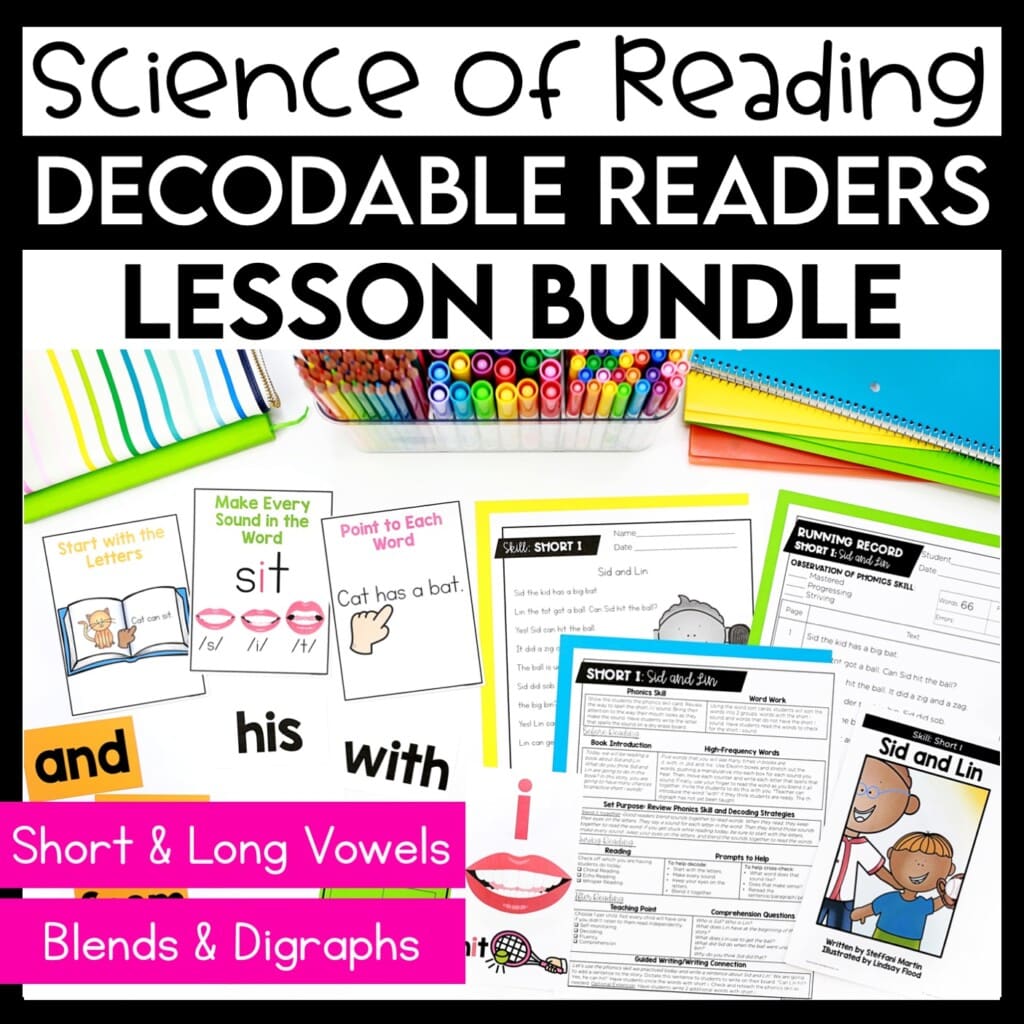

Want to use the latest research to boost your readers during small groups? This FREE guide is packed with engaging ideas to help them grow!

I’m a K-1 teacher who is passionate about making lessons your students love and that are easy to implement for teachers. Helping teachers like you navigate their way through their literacy block brings me great joy. I am a lifelong learner who loves staying on top of current literacy learning and practices. Here, you’ll find the tools you need to move your K-2 students forward!


| Cookie | Duration | Description |
|---|---|---|
| cookielawinfo-checkbox-analytics | 11 months | This cookie is set by GDPR Cookie Consent plugin. The cookie is used to store the user consent for the cookies in the category "Analytics". |
| cookielawinfo-checkbox-functional | 11 months | The cookie is set by GDPR cookie consent to record the user consent for the cookies in the category "Functional". |
| cookielawinfo-checkbox-necessary | 11 months | This cookie is set by GDPR Cookie Consent plugin. The cookies is used to store the user consent for the cookies in the category "Necessary". |
| cookielawinfo-checkbox-others | 11 months | This cookie is set by GDPR Cookie Consent plugin. The cookie is used to store the user consent for the cookies in the category "Other. |
| cookielawinfo-checkbox-performance | 11 months | This cookie is set by GDPR Cookie Consent plugin. The cookie is used to store the user consent for the cookies in the category "Performance". |
| viewed_cookie_policy | 11 months | The cookie is set by the GDPR Cookie Consent plugin and is used to store whether or not user has consented to the use of cookies. It does not store any personal data. |
